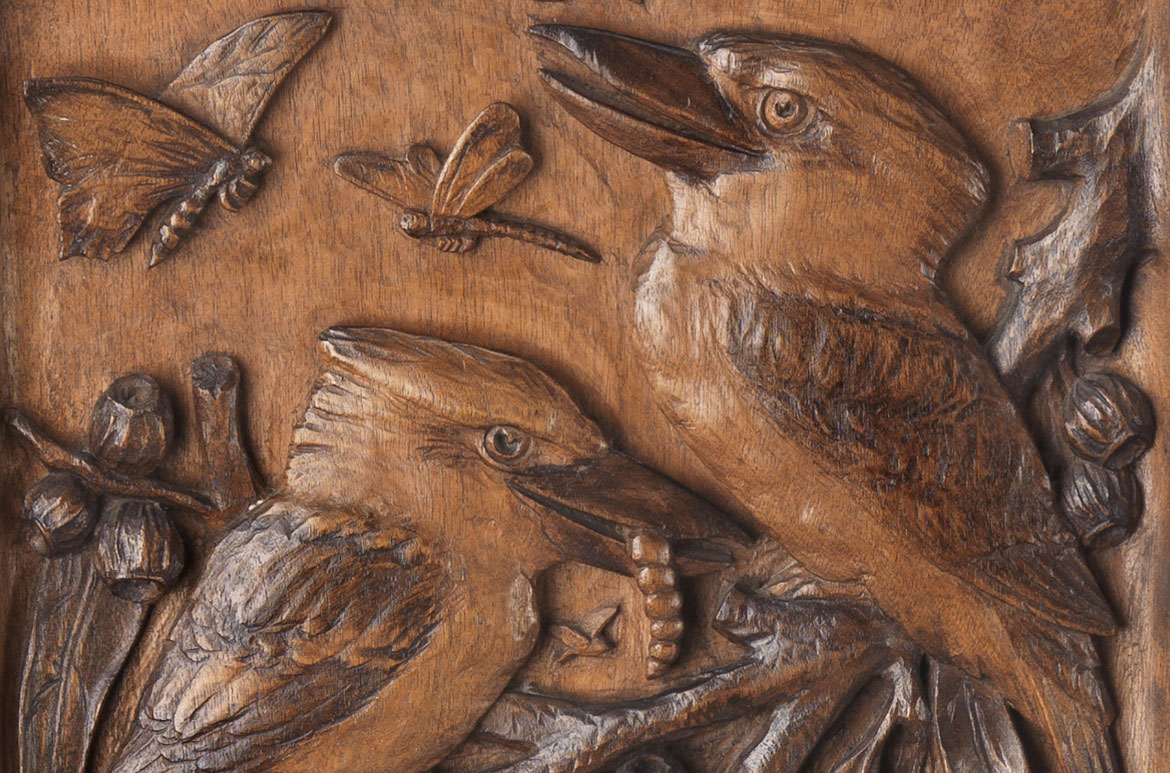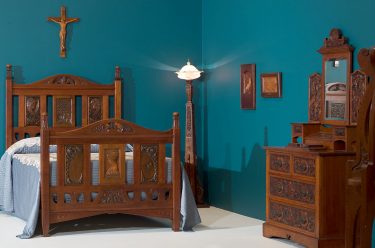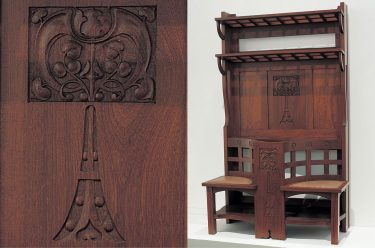Native to the eucalyptus forests of eastern Australia, the call of the laughing kookaburra is recognised by all, and just happens to be LJ Harvey’s favourite bird. During his career, Lewis Jarvis (LJ) Harvey (1871-1949) produced several carved screens (or room-dividers) to protect the face of someone sitting by a fire — and our screen depicts kookaburras on one side and a landscape on the reverse.
Harvey used to feed and study the Kookaburras at his house in Hill End (now West End) in Brisbane — and he modelled the birds frequently, using them to also decorate his ceramics (see Jackie tobacco illustrated). The reverse side of the screen depicts Tamborine Mountain, Harvey’s favourite retreat in which to study nature.
RELATED: LJ Harvey and his school
Harvey, a woodcarver, sculptor, potter and teacher lived in Brisbane in the first half of the twentieth century. His work is of national significance, primarily as a result of the pottery course he established at Brisbane’s Central Technical College (now Queensland University of Technology), which developed into the most extensive school of art pottery in Australia.
Artistically conservative, Harvey developed a distinct regional style based on European neo-Renaissance and Australian motifs, together with ceramic hand-building techniques and his classes, and the work of many of his students, meant his influence spanned more than three decades.
‘Jackie tobacco’ 1930
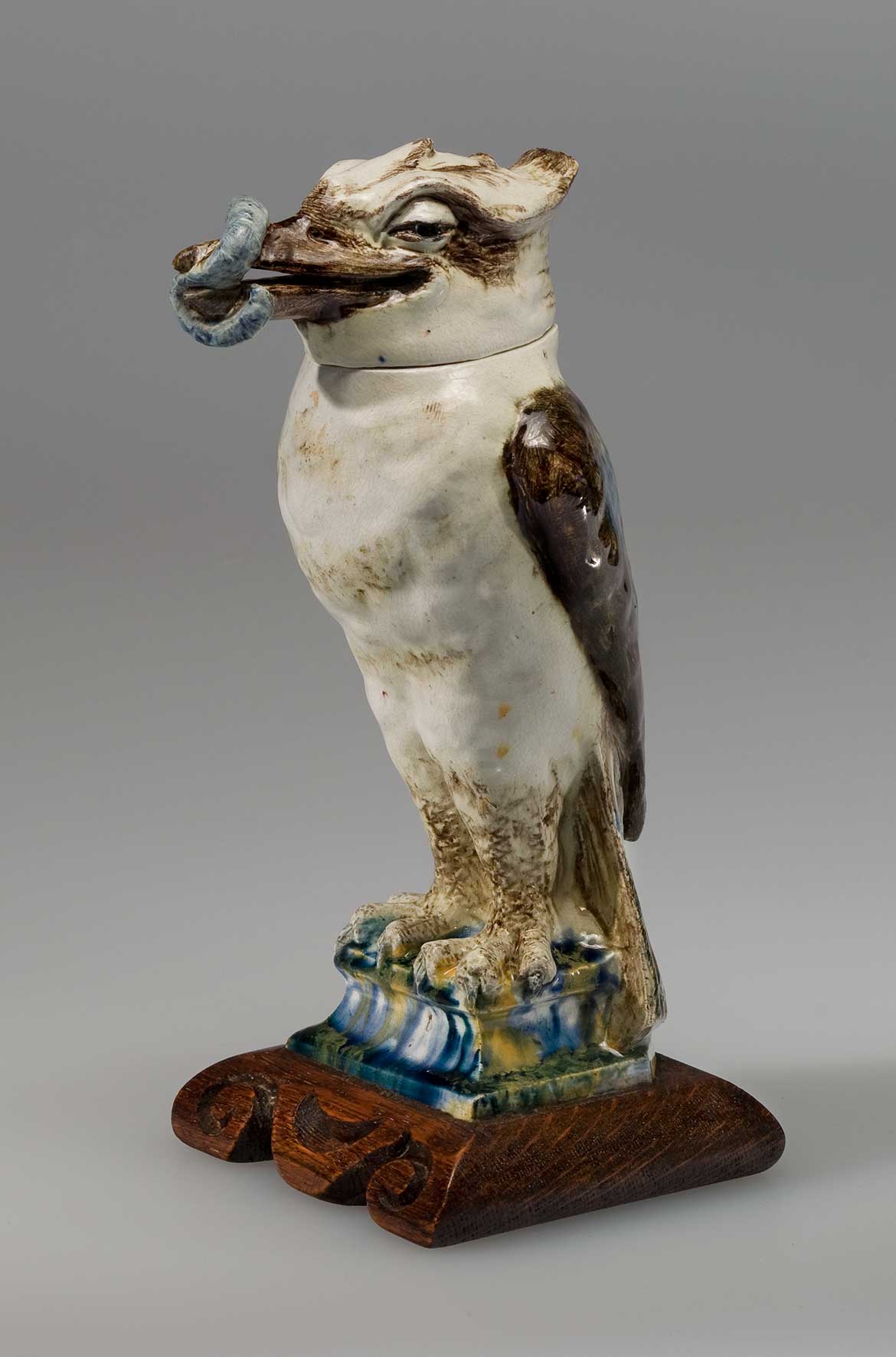
‘Screen with kookaburras and landscape’ 1931

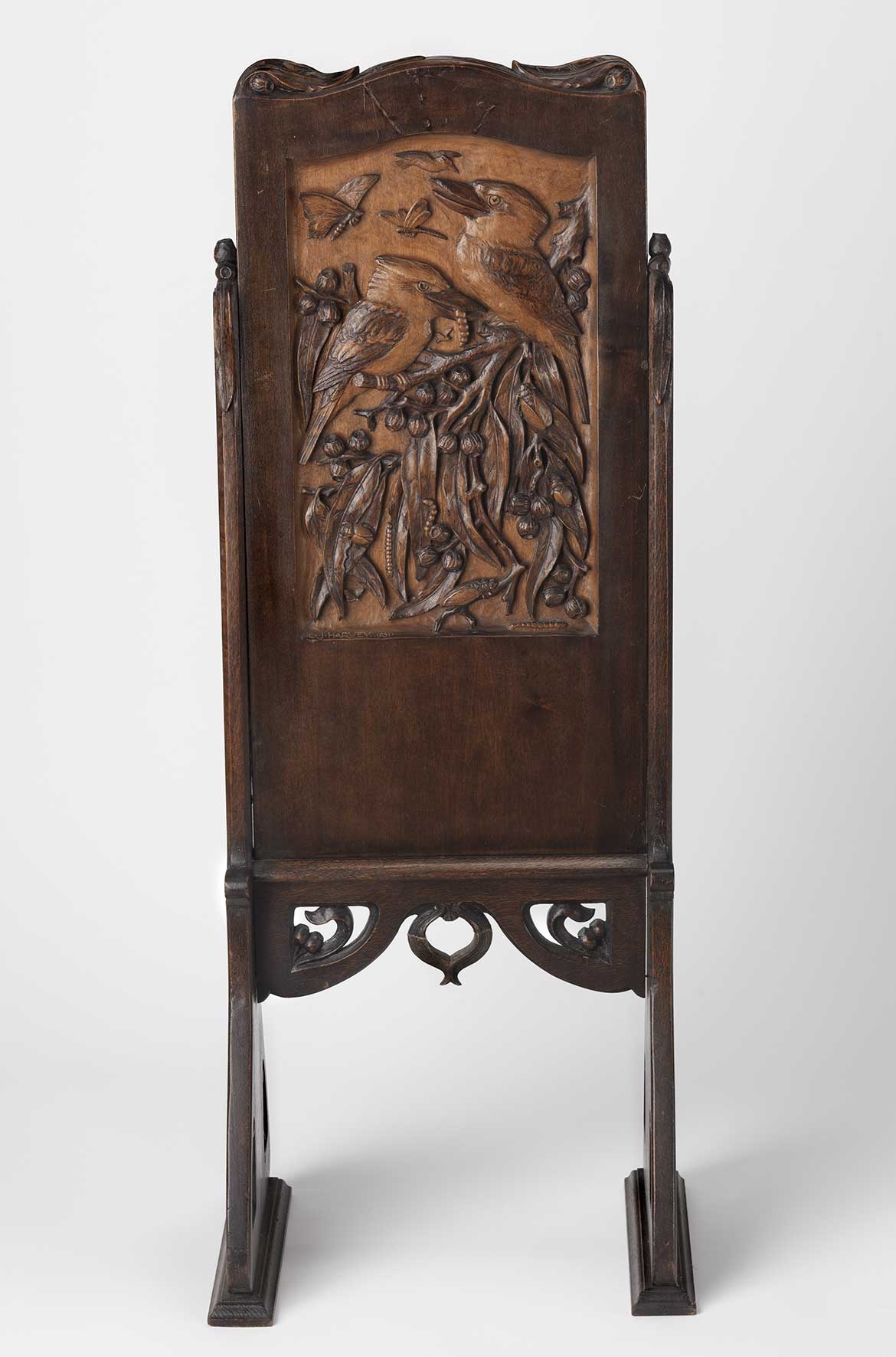
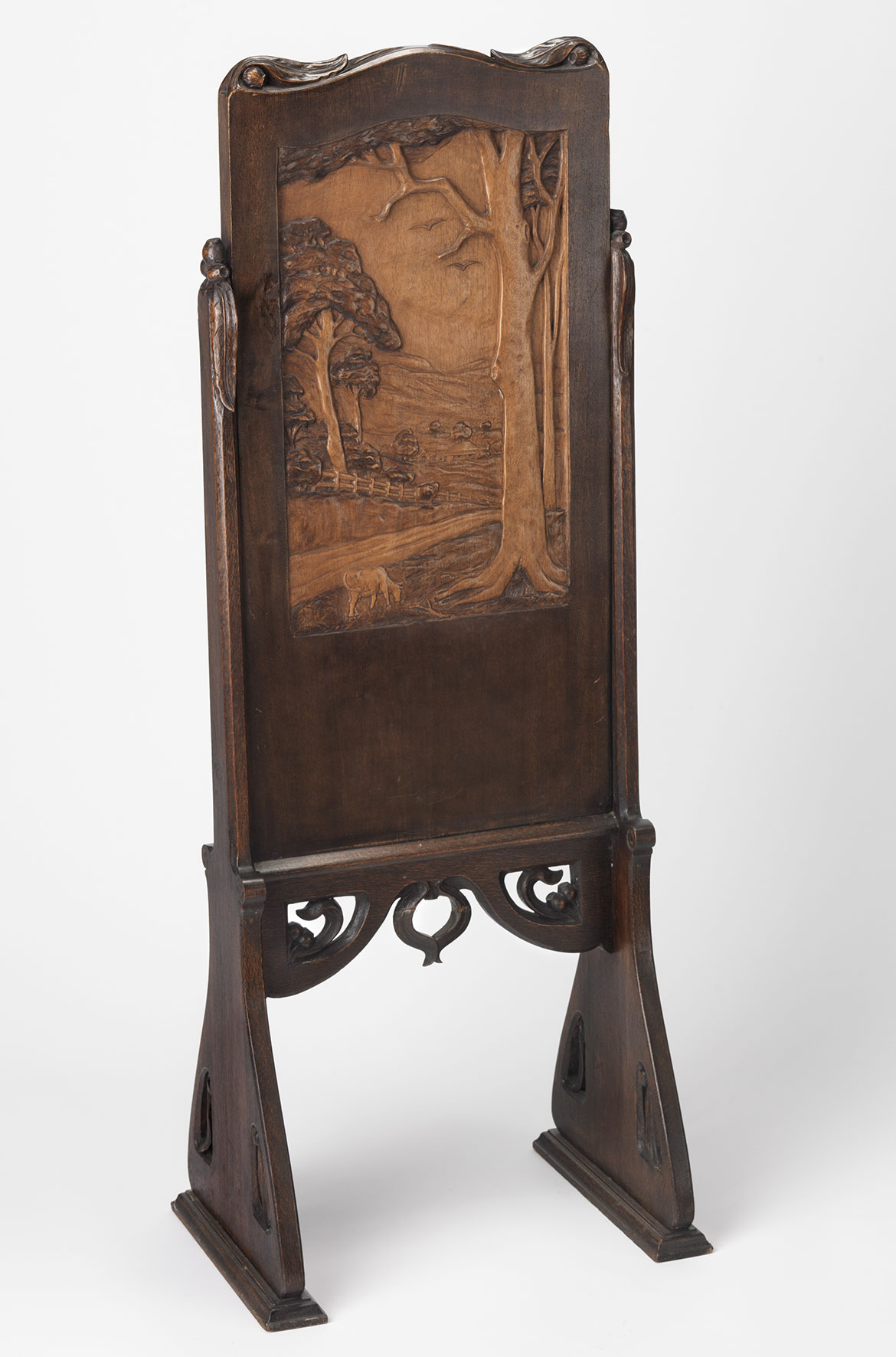
Tamborine Mountain
Located 62 kilometres from Brisbane and sitting on the edge of the escarpment behind the city of the Gold Coast, the Tamborine district was included in the Bunton Vale pastoral run of 1843 which was renamed Tamborine, in time the name was applied to the the plateau. From 1875 saw the first of several farms and by 1886 most of the plateau was under selection. Agriculture and dairy farming played an important role in the settlement, and soon after, tourism flourished with the earliest boarding houses established from the 1890s.
Tamborine Mountain
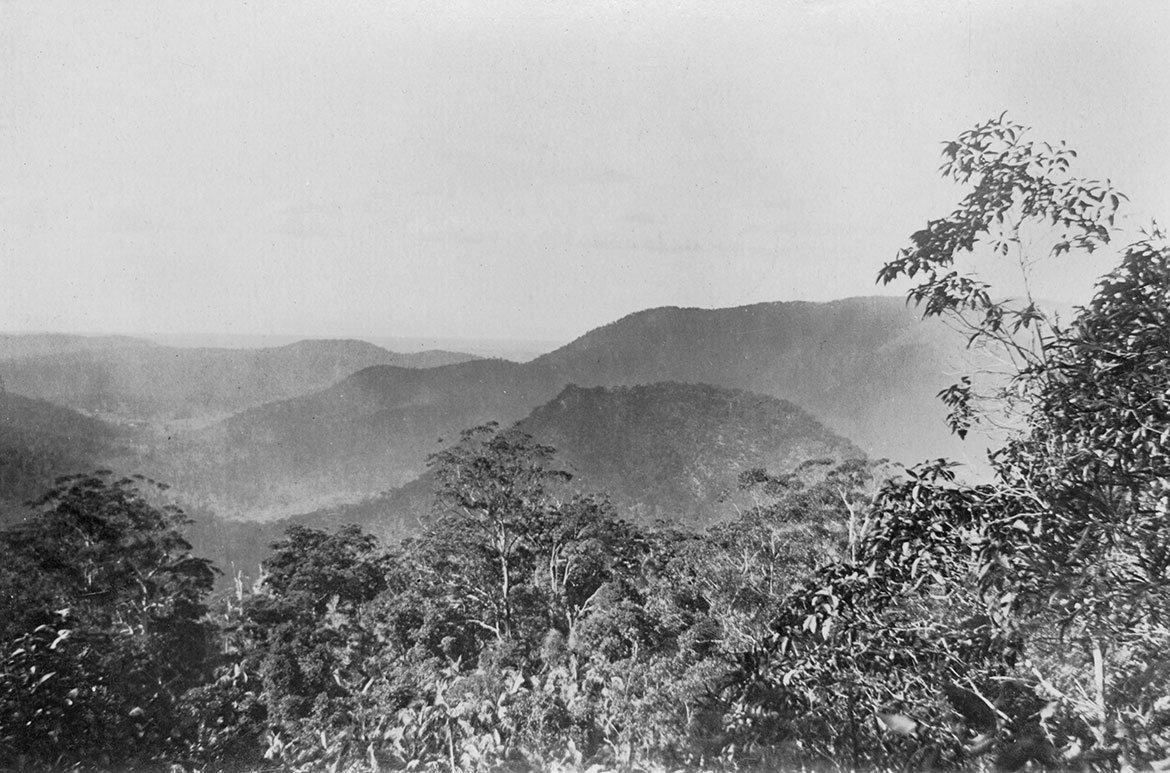
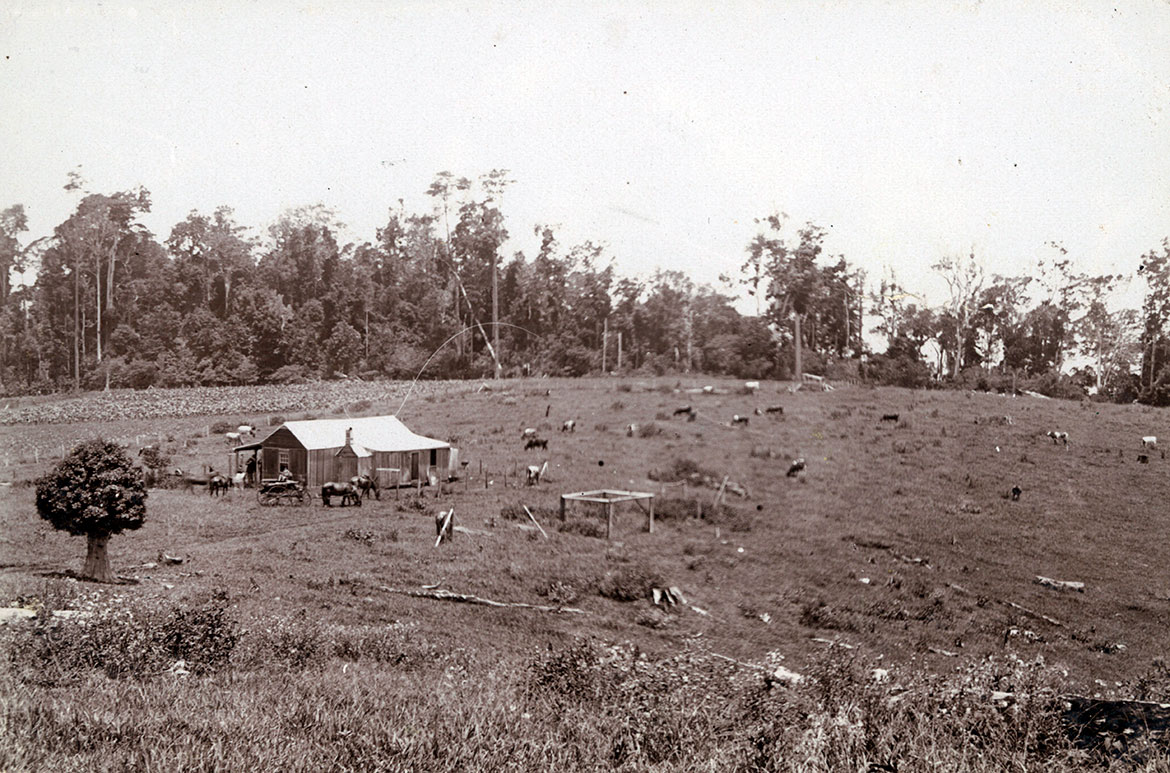
The mountain is home to both subtropical rainforest and open eucalypt forest, with the natural values of the area appreciated early. The Tamborine National Park was formally declared in 1908, made up of 12 separate sections of land it was the first in Queensland. During Harvey’s time a gravel road was eventually built from the bottom of the mountain in 1924 to cater for the increase in tourists, and in 1925 it became one of the first bitumen roads in Queensland (along with Queen Street in Brisbane’s city center) making the mountain a destination for artists.
Tamborine Mountain
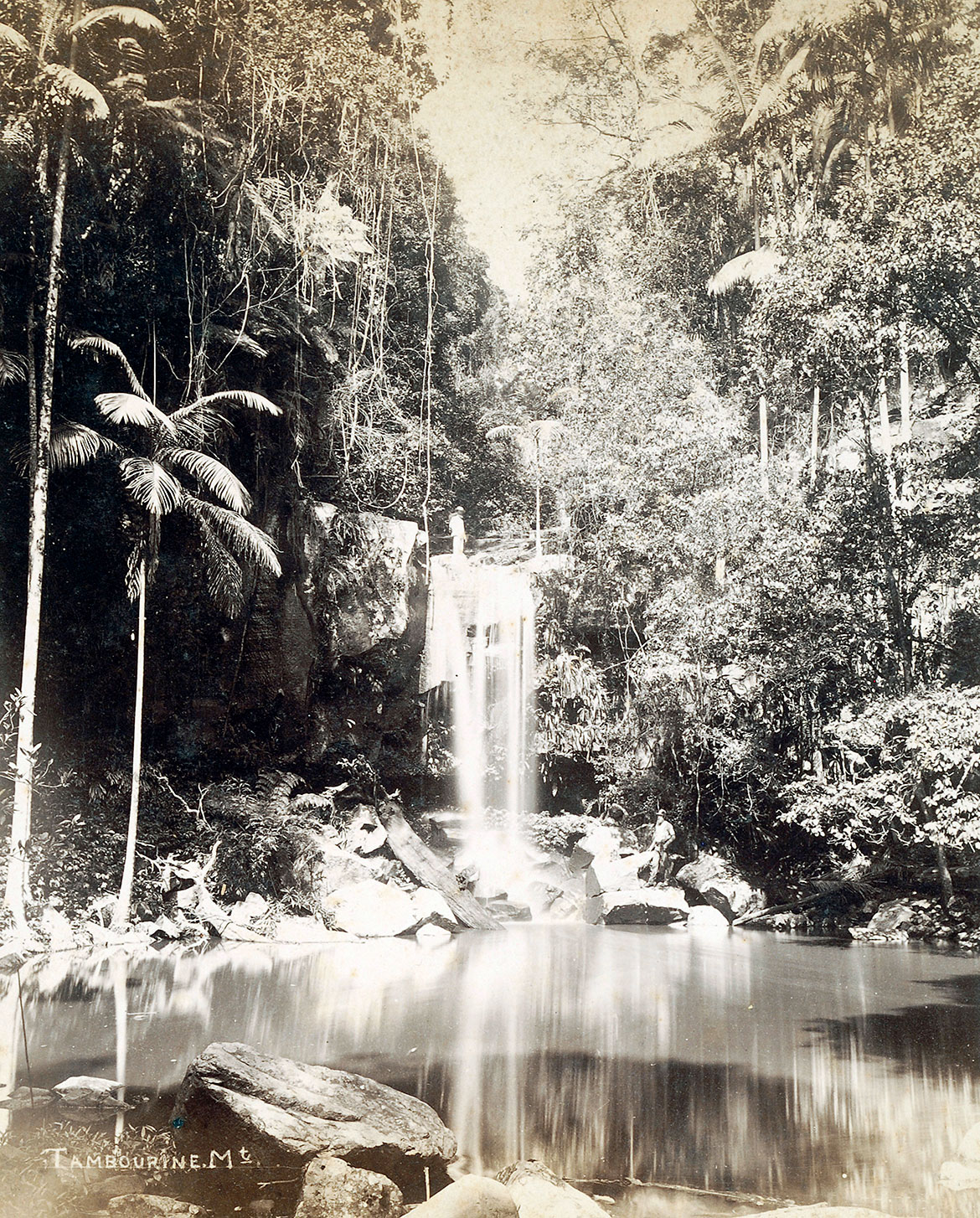
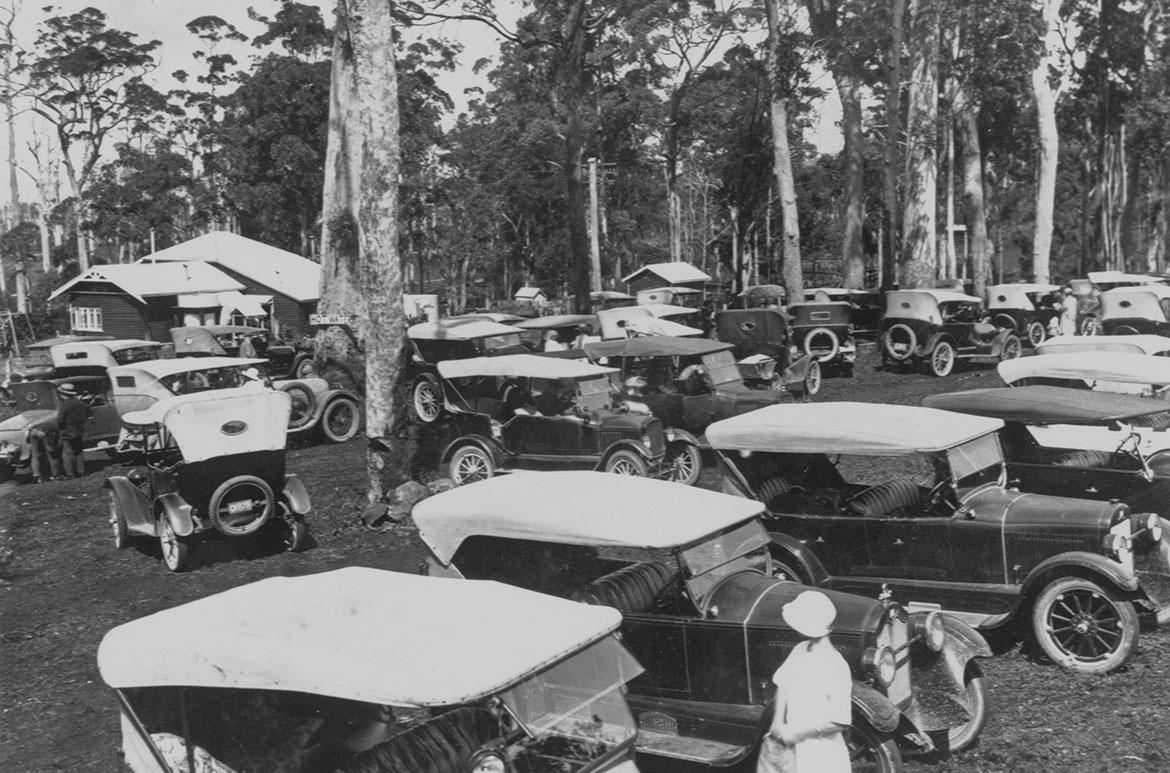
Delve into more works by LJ Harvey
According to the Reverends David and Bruce Noble, the artist’s grandsons, the head cresting the Honesty Mirror c.1915 (illustrated) is a portrait of their late aunt, Thelma Harvey, and relates to the time she and her sister Elsie played ‘fairies’ while holidaying at Tamborine Mountain (illustrated is a photograph of Elsie and Thelma a few years before, in costumes designed by R. Godfrey Rivers). One could assume, because the mirror is titled ‘Honesty’, that Harvey’s daughter also reflected that virtue; extending the theme — the figure is crowned with a diadem of the seed pods of the annual called honesty (‘Lunaria annua’).
RELATED: LJ Harvey’s ‘Bed of Peace’ 1919 made for Elsie Harvey
‘Honesty Mirror’ c.1915

‘Carved silky oak Art Nouveau frame’ c.1910-15
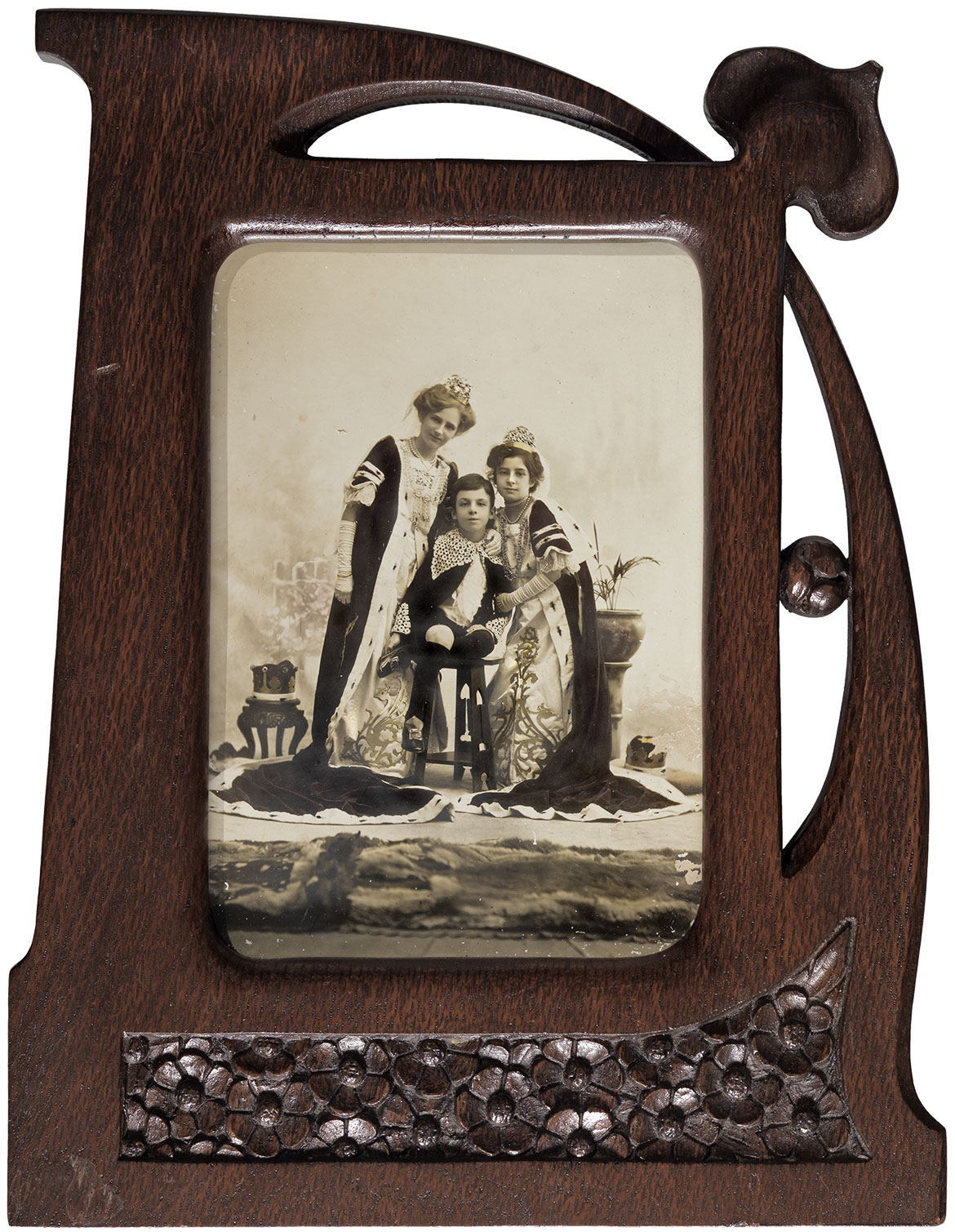
‘Marble plaque: Spirit of night’ c.1920s
Harvey’s marble plaques (illustrated), are the finest of his sculptural works. Generally Harvey could not afford the time or expense necessary for their execution and so they are also the rarest of his works. His many cast plaster plaques attempt to emulate the effect of marble.
Works by LJ Harvey feature in the Australian Art Collection at the Queensland Art Gallery.
Edited extracts from Glenn R Cooke, former Curator (Queensland Heritage), QAGOMA. Additional research and supplementary material by Elliott Murray, Senior Digital Marketing Officer, QAGOMA
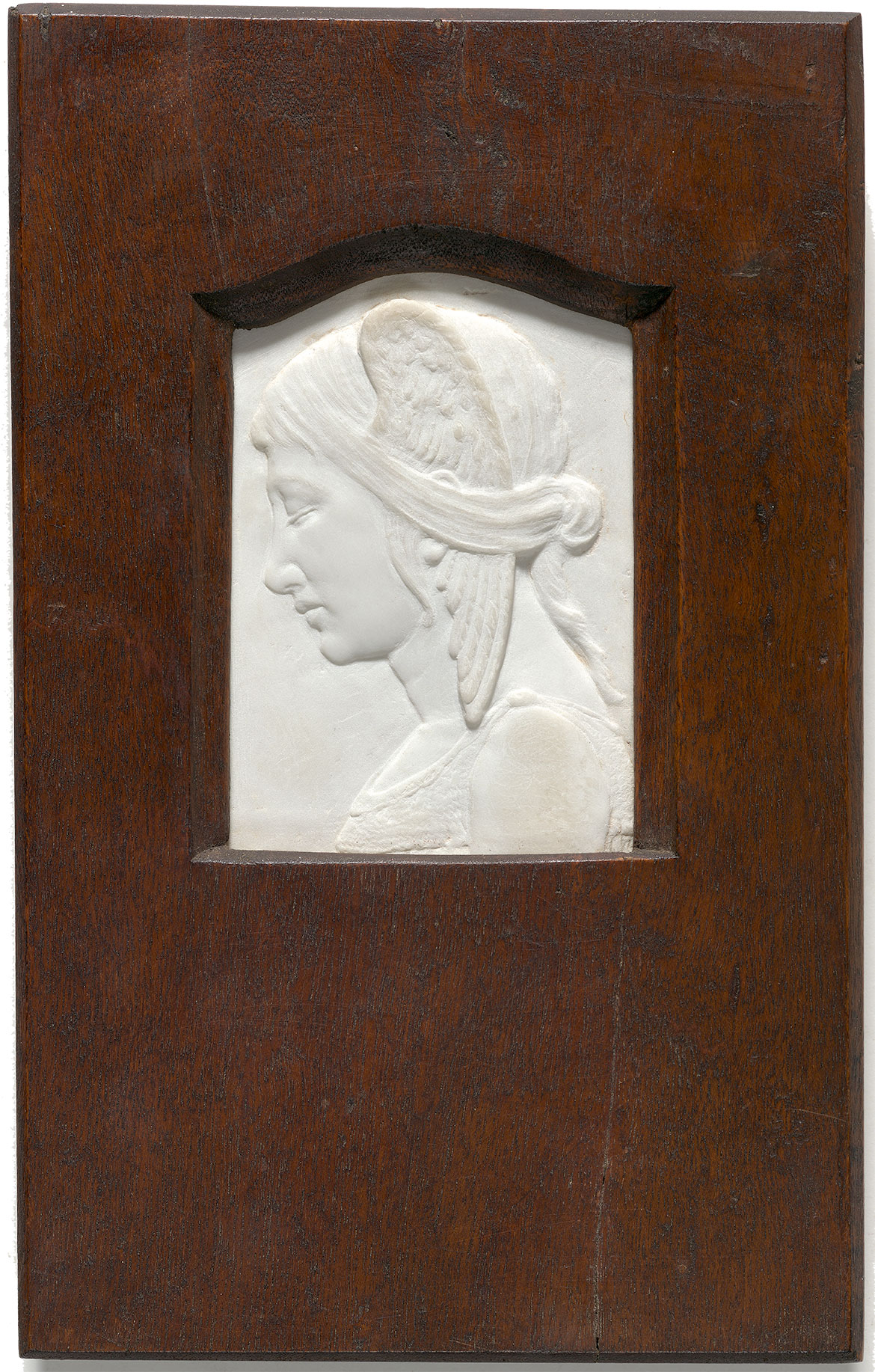
Featured image detail: LJ Harvey (Screen with kookaburras and landscape) 1931
#QAGOMA
